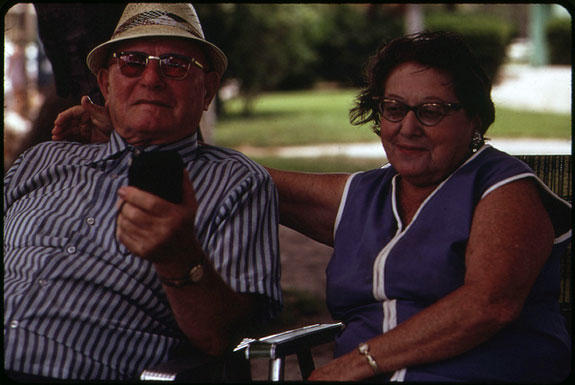
This couple was among the retirees who called South Beach home in the 1970s. But as Miami Beach grew younger, the rest of Florida became much older. (Photo by Flip Schulke, courtesy of U.S. National Archives.)
By Ralph De La Cruz
Florida Center for Investigative Reporting
The story in Tuesday’s Miami Herald about the graying of America in general, and Florida in particular, wasn’t notable because of what it predicted. The aging of our country’s population — pushed along by the Baby Boomers — is as much of a surprise as darkness after sunset.
Rather, what makes the article compelling is that it reminds us how ill-prepared communities are, despite the fact we’ve been talking about this since the 1960s.
“We’re behind on almost all the factors and it isn’t as if we didn’t see this coming,” Jeff Johnson, AARP state director, told the Herald’s Ana Veciana-Suarez. “Everybody has something, but no community has everything in place, and everyone is hamstrung by budget constraints.”
Although some communities offer limited programs and there are the state Agencies on Aging, there’s a general concern that there won’t be enough help to deal with the aging tsunami coming our way — particularly in a state such as Florida.
In just the past 20 years, the median age of Americans has gone up by more than five years. In 1990 it was 32. By 2010 it was 37.2.
It’s even higher in Florida (40.7) — one of seven states with a median age over 40. And in eight Florida counties, the median age is over 50. By 2030, more than one fourth of all Floridians (27.1 percent) will be over age 65.
The view is that we’re barely keeping up now. And with the movement toward even more austere budgets (although the Department of Elder Affairs ultimately avoided deep cuts, Gov. Rick Scott originally wanted to cut $39 million from its budget this year), there’s not much hope of catching up.
